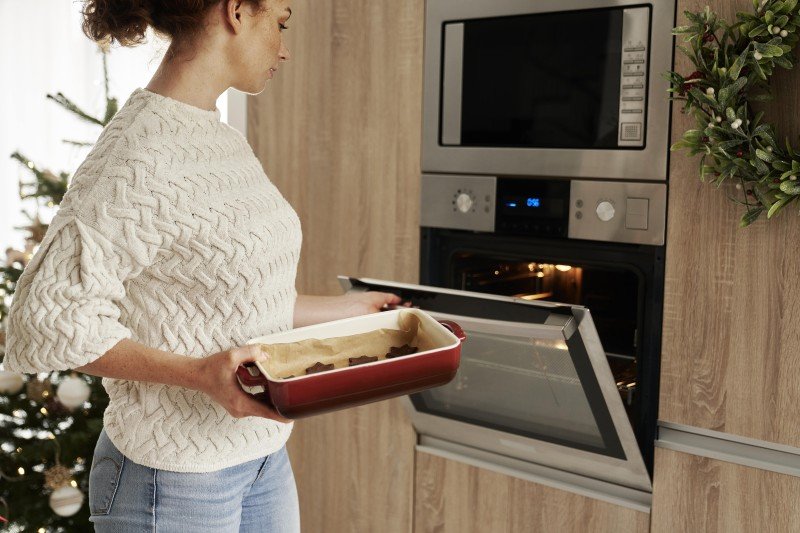Understanding Hobs and Ovens: The Essential Kitchen Appliances
In the realm of kitchen appliances, few products are as vital as hobs and ovens. Online Cooker Sales form the foundation of cooking activities, enabling people to develop everything from basic meals to elaborate banquets. Comprehending the differences, types, and performances of hobs and ovens can significantly enhance one's cooking experience. This article looks into the intricacies of hobs and ovens, supplying insights that deal with both novice and seasoned cooks.
What Is a Hob?
A hob, frequently referred to as a cooktop or range top, is the flat surface on which pots and pans are placed for cooking. Hobs are geared up with heating aspects that generate the required heat for cooking food. Ovens With Hobs are available in numerous kinds, including gas, electric, induction, and ceramic options. Each type provides distinct benefits and disadvantages.
Kinds of Hobs
Gas Hobs:
- Heat Source: Natural gas or propane.
- Advantages: Instant heat control and responsiveness, preferred by lots of chefs for exact cooking.
- Downsides: Requires a gas connection and can be less energy-efficient.
Electric Hobs:
- Heat Source: Electric coils or smooth glass-ceramic surfaces.
- Benefits: Generally easier to clean up, even heating, and extensively readily available.
- Downsides: Slower to warm up and cool down compared to gas.
Induction Hobs:
- Heat Source: Electromagnetic currents.
- Advantages: Quick heating, energy-efficient, and only heats up the cookware, not the surrounding surface.
- Disadvantages: Requires suitable cookware (ferrous materials).
Ceramic Hobs:
- Heat Source: Electric and has a smooth glass surface area.
- Benefits: Sleek look, easy to tidy, and even heating.
- Downsides: Can take longer to warm up and cool off.
What Is an Oven?
An oven is an enclosed device that cooks food by surrounding it with dry heat. Ovens can be standalone units or combined with hobs in a single home appliance called a range. Ovens are versatile tools that can be used for baking, roasting, broiling, and more.
Kinds of Ovens
Standard Ovens:
- Heat Source: Electric or gas.
- Benefits: Good for conventional baking and roasting.
- Disadvantages: Can have irregular heat distribution.
Convection Ovens:
- Heat Source: Electric or gas with a fan for flowing air.
- Benefits: More even cooking and much faster cooking times due to airflow.
- Downsides: Can be pricier and may require adjustments in cooking times.
Microwave Ovens:
- Heat Source: Microwaves.
- Advantages: Quick cooking and reheating; fantastic for defrosting.
- Drawbacks: Can not brown or crisp food well.
Steam Ovens:
- Heat Source: Steam generation.
- Benefits: Retains nutrients and moisture in food, healthier cooking alternative.
- Downsides: Longer cooking times and typically higher cost.
Secret Differences Between Hobs and Ovens
While hobs and ovens serve the primary function of cooking food, their functionalities and uses differ substantially. The following table summarizes these key differences:
| Feature | Hob | Oven |
|---|---|---|
| Cooking Method | Direct heat | Enclosed heat |
| Primary Use | Boiling, sautéing, frying | Baking, roasting |
| Heat Source | Gas, electric, induction | Gas, electric, steam |
| Cooking Area | Flat surface area | Enclosed space |
| Cooking Time | Typically much faster | Differs based on meal |
| Control & & Precision | Immediate and direct | Depend on settings and timers |
Advantages of Using Hobs and Ovens Together
Integrating making use of a hob and an oven can considerably boost the cooking process. Here are some advantages:
- Versatility: Different kinds of food can be cooked simultaneously.
- Efficiency: Using both enables various cooking techniques, such as searing on the hob and baking in the oven.
- Time-Saving: Multi-tasking can considerably decrease general cooking time.
Maintenance and Care
To ensure the durability of hobs and ovens, regular upkeep is vital. Here are some tips:
For Hobs:
- Clean spills immediately to avoid staining.
- Use appropriate cleaners for specific materials (e.g., ceramic cleaner for glass-ceramic hobs).
- Routinely check gas connections for leaks (for gas hobs).
For Ovens:
- Wipe down the interior after each use to prevent accumulation.
- Usage self-cleaning features if offered, or use oven cleaners for difficult stains.
- Frequently check seals and gaskets for wear and tear (to maintain heat performance).
Frequently asked questions About Hobs and Ovens
1. What is the best type of hob for a newbie cook?
Response: A ceramic or electric hob is typically recommended for newbies due to relieve of usage and cleaning.
2. Can I utilize any cookware on an induction hob?
Answer: No, induction hobs need cookware made from magnetic materials (e.g., cast iron or stainless steel).
3. How often should I clean my oven?
Answer: It is advisable to clean your oven every couple of months, or more regularly if you utilize it frequently.
4. Is it much better to bake in a convection oven?
Response: Yes, convection ovens are typically better for baking as they provide even heat distribution. However, some delicate dishes might take advantage of traditional ovens.
Comprehending the functionality and distinctions in between hobs and ovens is essential for any cooking enthusiast. Whether one prefers the instantaneous heat of a gas hob or the precision of an induction cooktop, each type provides unique benefits. Likewise, ovens vary widely in function, from conventional baking to steam cooking. By appreciating these devices' roles in food preparation, cooks can boost their culinary skills and streamline their kitchen activities.

